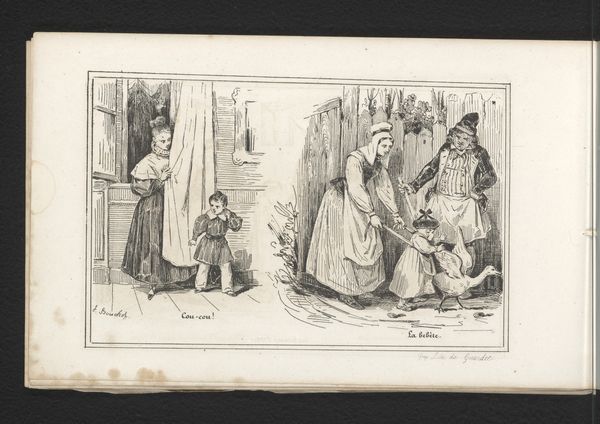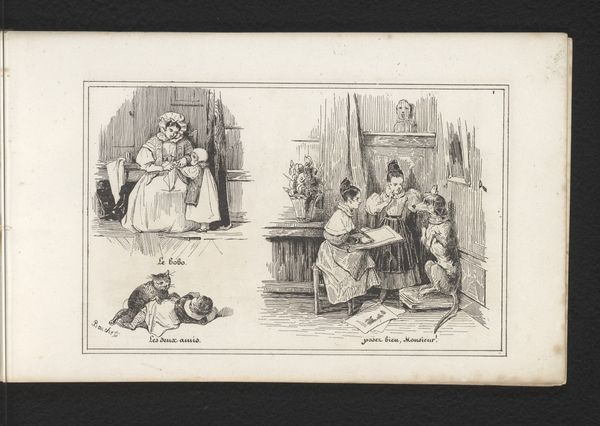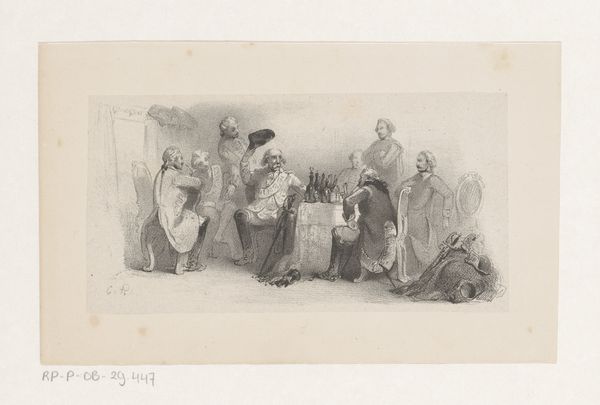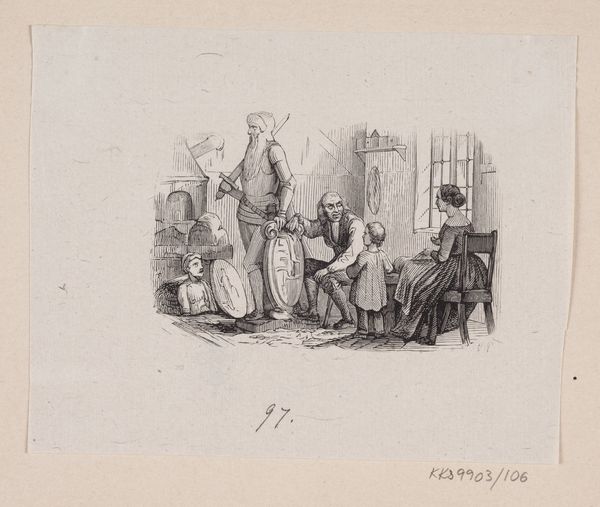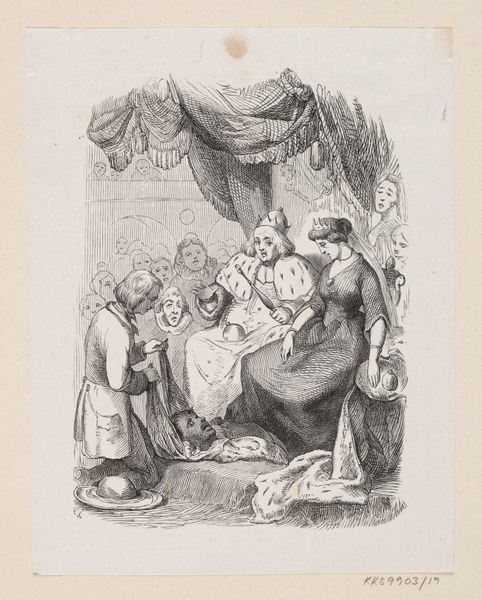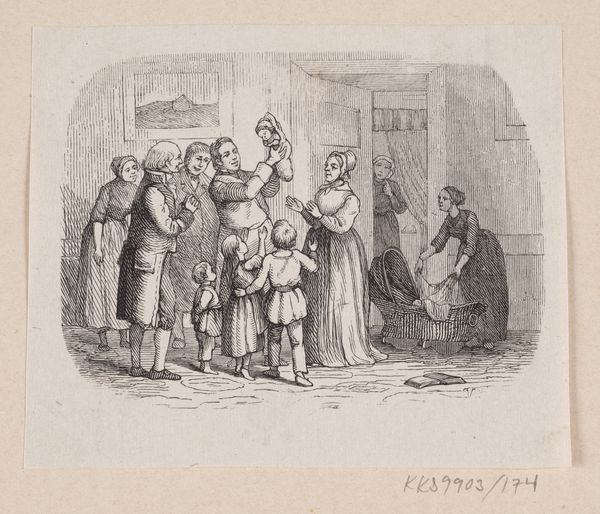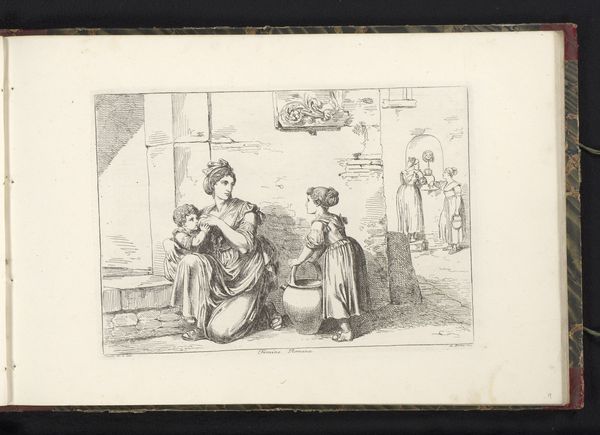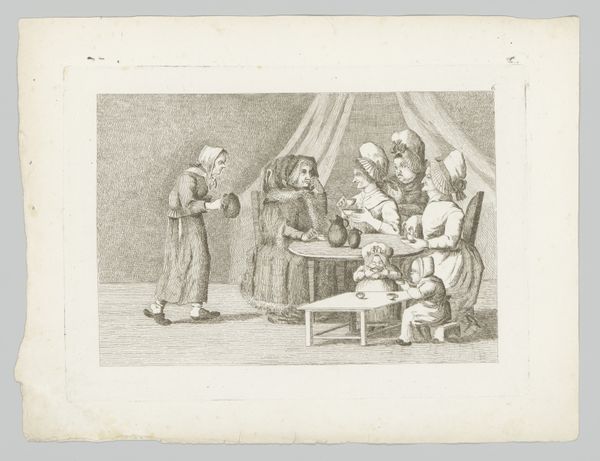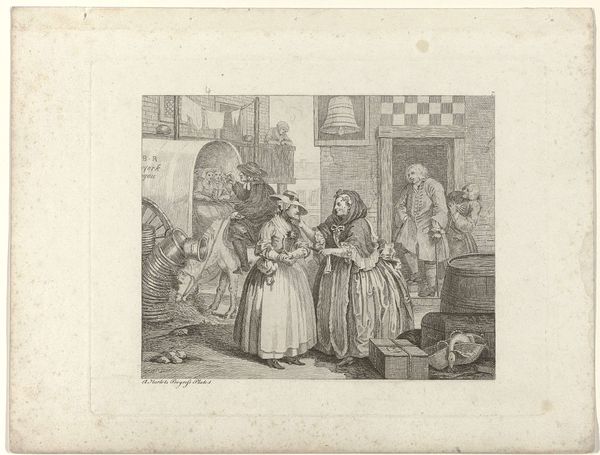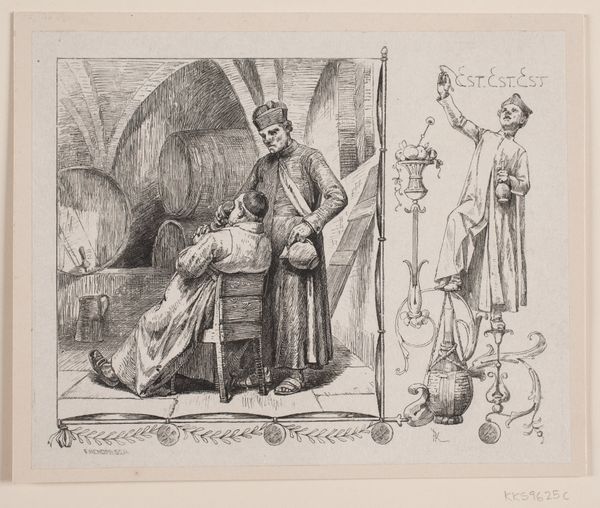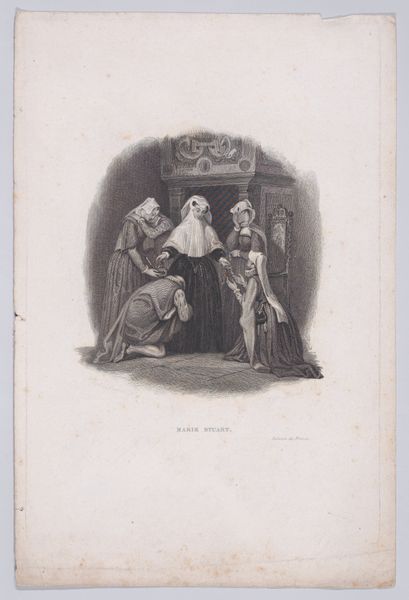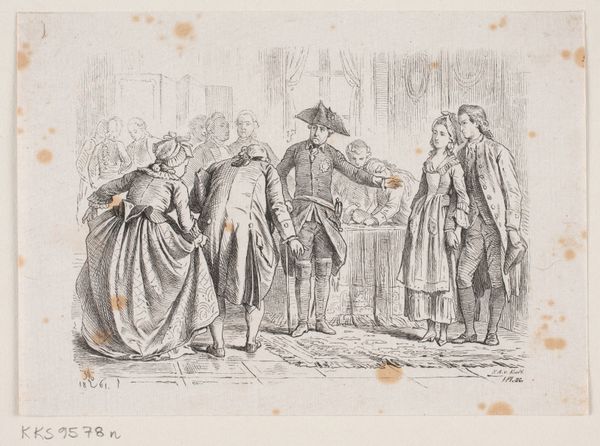
drawing, ink, pen
#
portrait
#
drawing
#
aged paper
#
toned paper
#
narrative-art
#
sketch book
#
figuration
#
personal sketchbook
#
ink
#
romanticism
#
pen-ink sketch
#
pen and pencil
#
pen work
#
sketchbook drawing
#
pen
#
genre-painting
#
storyboard and sketchbook work
#
sketchbook art
Dimensions: height 141 mm, width 232 mm
Copyright: Rijks Museum: Open Domain
Editor: We're looking at "Woman with Goat and Sick Woman in Chair," an 1834 pen and ink drawing by Frédéric Bouchot, housed at the Rijksmuseum. The drawing feels almost like two separate scenes stitched together: one depicting a peasant woman and goat, the other a sick woman in bed attended by two figures. How do you interpret this juxtaposition? Curator: It's a fascinating piece for the dialogue it creates around labor, illness, and social strata in 19th-century France. The peasant woman, rendered with a certain earthiness, embodies a life of physical labor. Notice how her figure is positioned in contrast to the fragility of the bedridden woman in the other panel. Editor: It seems to hint at something about the relationship between the classes. Curator: Precisely. Is Bouchot suggesting that the realities of rural labor directly influence the lives of those in urban settings? Think about access to resources, hygiene, and even the very definitions of health in different communities. Also, notice how the supposed cause of care seems to involve a male military figure, hinting that social structure and patriarchal influence are both at play. What story do you think is being told about gender roles within these unequal circumstances? Editor: It's a powerful commentary, and it speaks to broader systems of power and exploitation during this time. Seeing the artwork this way definitely shines a different light on these relationships. Curator: Absolutely, and I wonder, how do these considerations impact our understanding of contemporary society? What kind of critical conversations can this spark? Editor: Well, for me, it’s highlighted the link between societal conditions and individual wellbeing, something that sadly remains relevant today. Thanks!
Comments
No comments
Be the first to comment and join the conversation on the ultimate creative platform.
